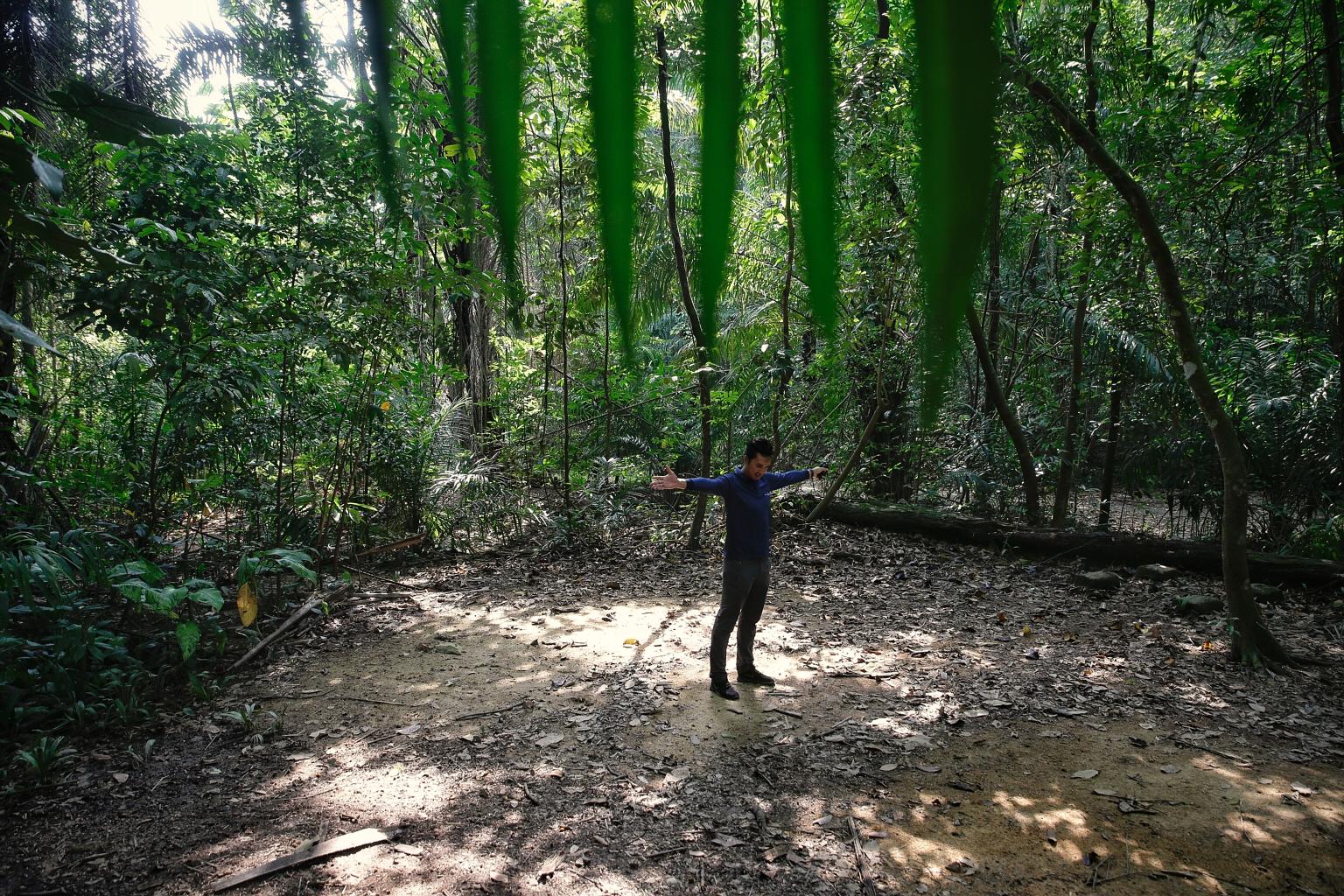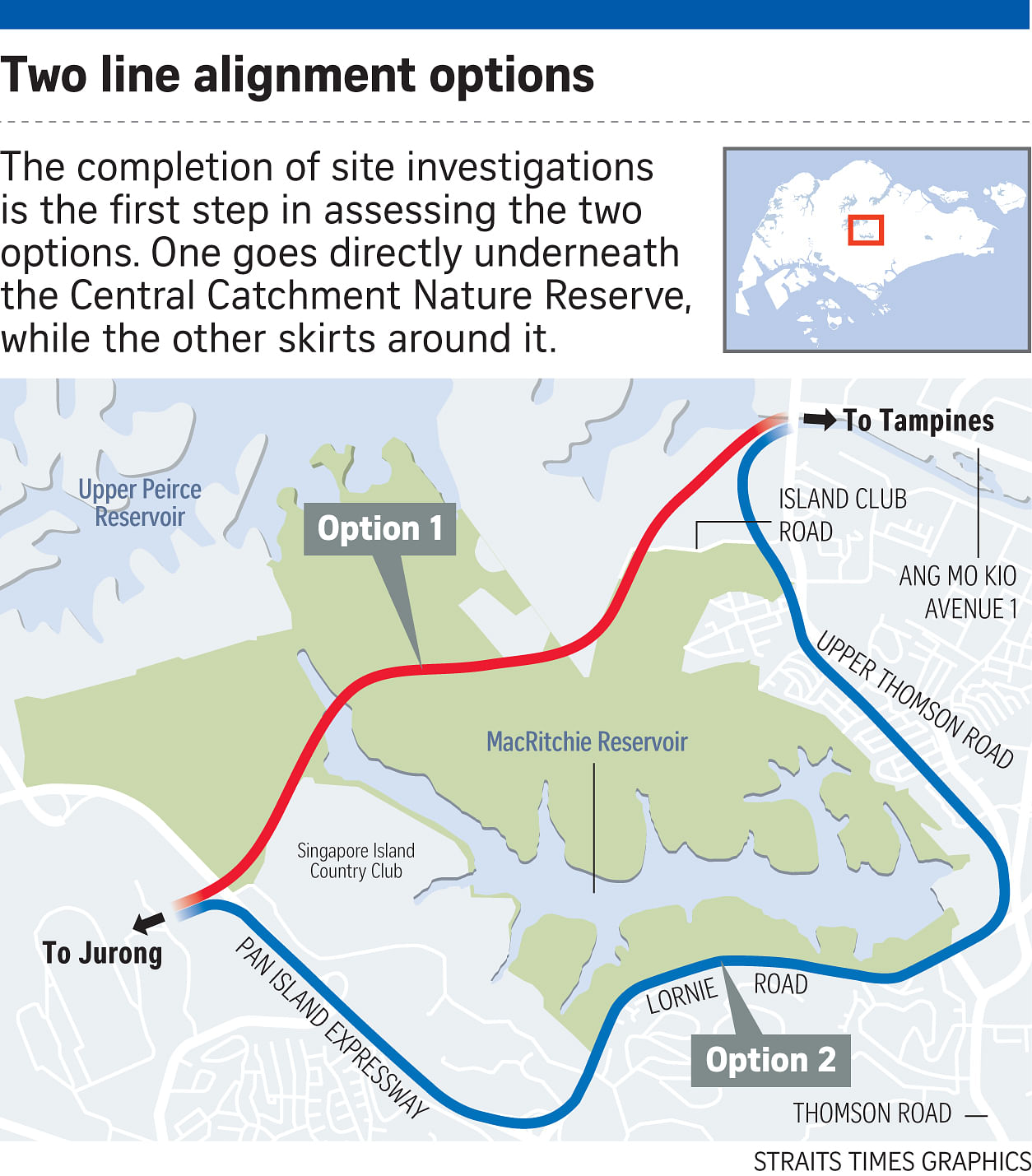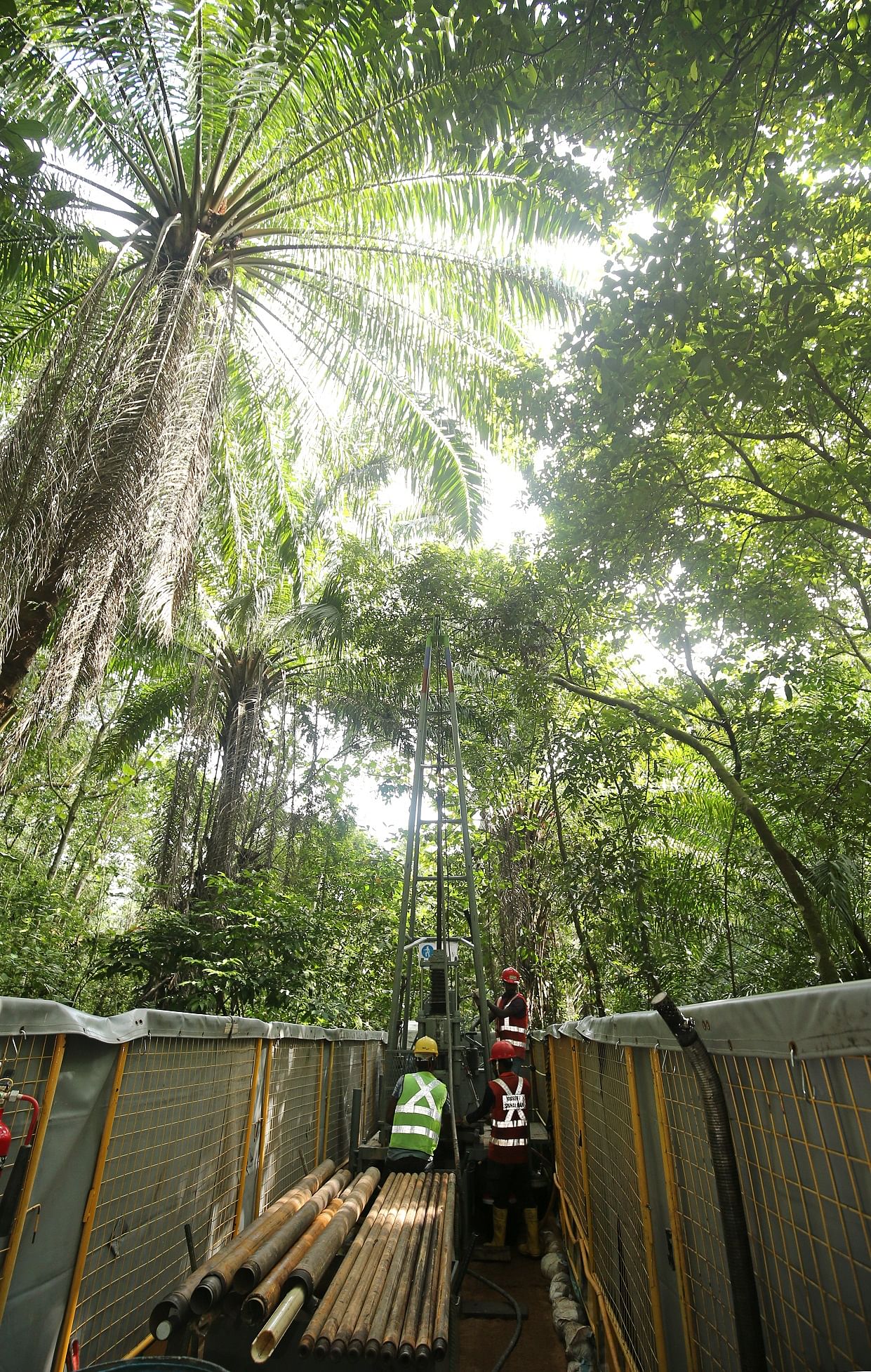MRT soil probe: Steps to ease impact on wildlife working
LTA says animals still present in areas where drilling for soil samples for Cross Island Line took place
Sign up now: Get ST's newsletters delivered to your inbox

An LTA engineer showing the approximate location and width of a boring site, during a site visit on Thursday, for a hole that had been drilled and then covered up.
ST PHOTO: KEVIN LIM
Derek Wong
Follow topic:
Measures to mitigate the effects of investigation works for the Cross Island MRT Line (CRL) on wildlife have shown signs of working, the Land Transport Authority (LTA) said yesterday.
It has found that wildlife is still present in parts of the Central Catchment Nature Reserve where drilling for soil samples has taken place. The drilling was part of the LTA's site investigations to study the impact of the CRL running under the reserve.
The LTA found the presence of wildlife in monitoring results from cameras and ground surveys.
Photos captured by camera traps included those of endangered animals such as the sunda pangolin and the lesser mousedeer.
LTA's director of civil design and land, Dr Goh Kok Hun, said: "The findings were encouraging and validated the mitigation measures developed."
These measures were put in place to minimise the impact of site investigation works on the flora and fauna in the reserve.
The investigation works, which took place between May 2016 and September last year, involved drilling 16 boreholes to extract soil samples.
They were the first steps in assessing the two CRL alignment options - going directly underneath the nature reserve or skirting it, said LTA.
The line, announced by the Government in 2013, had preliminary plans that showed it going under the reserve.
This raised concerns among nature groups here.

LTA consulted the National Parks Board and nature groups here over three years before drilling started.
There was a comprehensive suite of mitigation measures, said LTA, such as reducing the number of boreholes required for the works from 72 to 16.
Other measures included locating the boreholes on existing trails and clearings to minimise the impact on existing flora.
National University of Singapore biology lecturer N. Sivasothi, who has been part of the discussions LTA has had with nature groups, commended the suite of measures..
He said discussions on the plan were so detailed that they included specifying how an engine pump was to be operated to prevent petrol spillage.
These plans were necessary due to the potentially disruptive impact of the works, Mr Sivasothi said.

He added: "The process of conducting the investigation could have led to pollution - soil and oil can make the waters murky. The running engine and workers in the area would also cause animals to avoid the sites."
The boreholes were about 10cm in diameter and ranged from 50m to 80m deep at the different sites.
Ms Chloe Tan, spokesman for the Love Our MacRitchie Forest volunteer group, said the presence of animals might not mean there was no impact on the animals. There is a need to know their abundance and distribution too, she added.
She is hoping the line will not pass under the reserve.
While Mr Sivasothi looks forward to the full results of the study on the site investigations, he said these might not be sufficient.
"This is for the short term, but we will not know the long-term impact in 50 or 100 years, which is why we take great pains to avoid having works near or in the nature reserve," he said.
Phase two of the study, which assesses the potential environmental impact of future construction - including tunnelling and operations - is ongoing and is expected to be completed later this year, said LTA.
The CRL alignment will be finalised after the phase two results have been studied and discussed.
The 50km Cross Island Line will stretch from Changi to Jurong, and is set to be completed in 2030.

